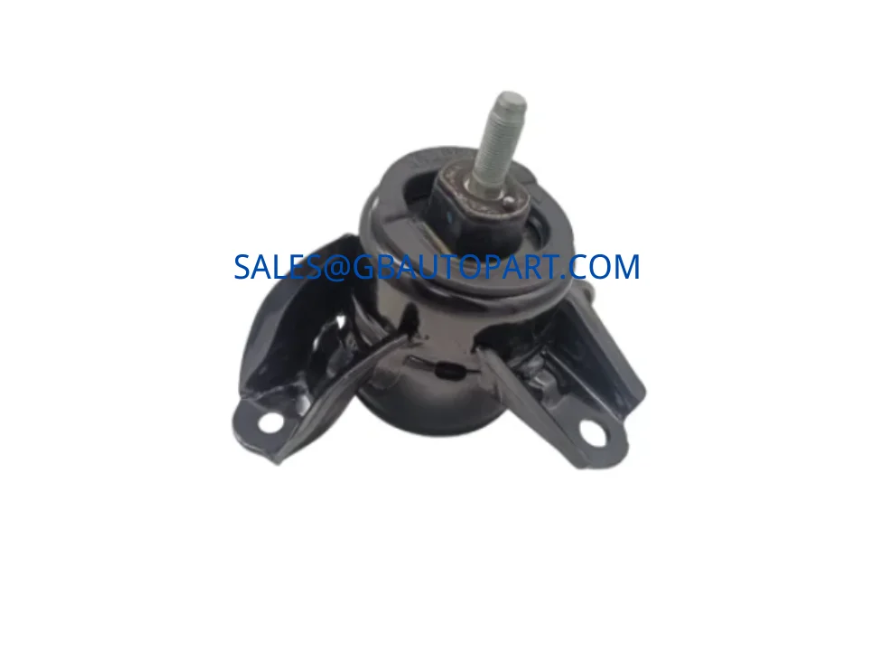
Replacing a clutch component is a critical maintenance task for any vehicle owner. The clutch system, a vital link between the engine and the transmission, ensures smooth gear changes and efficient power transfer. Among its many parts, the clutch cover assembly plays a crucial role. This guide focuses on the 21810-H7000 Clutch Cover Assembly, a specific part number that many mechanics and DIY enthusiasts will encounter. Understanding its function, recognizing the signs of its failure, and knowing the proper replacement procedure are essential steps to ensure your vehicle’s longevity and safety.
Understanding the Role of the Clutch Cover Assembly

The clutch cover assembly, often called the pressure plate, is a mechanical component that works in conjunction with the clutch disc and flywheel. Its primary function is to apply pressure to the clutch disc, clamping it against the flywheel. This action allows the engine’s rotational power to be transmitted to the transmission. When the clutch pedal is depressed, the pressure plate releases the clamping force, disengaging the clutch and allowing the driver to shift gears.
The 21810-H7000 is a highly specialized part, designed for specific vehicle models. Its design and material composition are engineered to withstand the immense heat and friction generated during clutch operation. The assembly typically consists of a pressure plate, a diaphragm spring, and a cover. The diaphragm spring is particularly important; its flexibility and durability are key to providing consistent clamping force over thousands of clutch engagements. When a component like the 21810-H7000 is manufactured, it undergoes rigorous testing to meet OEM standards, ensuring optimal performance and a long service life.
Recognizing the Signs of a Failing Clutch Cover Assembly
Identifying the symptoms of a failing clutch cover is the first step toward a timely repair. Ignoring these signs can lead to more extensive and costly damage to the transmission and other parts of the driveline. Here are some of the most common indicators:
- Slipping Clutch: This is perhaps the most obvious symptom. If you feel the engine revs increasing without a corresponding increase in vehicle speed, the clutch is slipping. This can happen under hard acceleration, especially when going uphill. The pressure plate may not be applying enough force to hold the clutch disc firmly against the flywheel.
- Difficulty Shifting Gears: A failing pressure plate can make it difficult to engage gears, particularly reverse. You might hear a grinding sound or feel resistance when trying to shift. This is often because the clutch isn’t fully disengaging, meaning the transmission input shaft is still spinning when you try to shift.
- Clutch Pedal Pulsation or Vibration: A pressure plate that has warped or is no longer properly aligned can cause a pulsing sensation in the clutch pedal. This vibration is a clear sign of a mechanical issue within the assembly.
- Unusual Noises: You may hear a growling, squealing, or chattering noise when the clutch pedal is pressed or released. This can be caused by a worn-out release bearing or a damaged diaphragm spring within the 21810-H7000 assembly.
The Importance of Correct Replacement Procedures
Replacing a clutch cover assembly is not a task to be taken lightly. It requires specialized tools, mechanical expertise, and a meticulous approach. Here’s a breakdown of the critical steps and considerations:
1. Sourcing the Right Part: First and foremost, you must ensure you are using the correct replacement part. The 21810-H7000 is a specific part number for a reason. Using an incompatible clutch cover can lead to premature failure, poor performance, and potentially damage other components. It is crucial to verify the part number against your vehicle’s make, model, and year. Choosing a reputable supplier like gbautopart ensures you get a high-quality, genuine replacement.
2. The Full Replacement Kit: While you might think you only need to replace the clutch cover, it is highly recommended to replace the entire clutch kit. This typically includes the clutch disc, the pressure plate (the 21810-H7000 in this case), and the release bearing. The clutch disc and release bearing are subjected to the same wear and tear as the pressure plate, and replacing them together ensures all components are new and have a matching lifespan. This prevents having to do the job twice.
3. Professional Installation is Key: Due to the complexity and precision required, professional installation is strongly advised. The process involves removing the transmission from the vehicle, which can be a difficult and time-consuming task without a lift and the right tools. A professional mechanic also has the experience to spot other potential issues, such as a worn-out flywheel or a leaky rear main seal, which can be addressed at the same time.
4. Proper Flywheel Resurfacing: The flywheel is the surface that the clutch disc presses against. If the flywheel has grooves, hot spots, or uneven wear, it must be resurfaced or replaced. Failing to do so can cause a new clutch to slip and wear out prematurely. A professional will assess the flywheel’s condition and perform the necessary maintenance.
The Role of Rubber Parts in Clutch Systems
While the clutch cover assembly itself is primarily made of metal, various rubber parts play a silent but crucial role in the clutch system and its surrounding components. For instance, rubber bushings and mounts are used to dampen vibrations and isolate the transmission from the chassis. The clutch master and slave cylinders, which use hydraulic fluid to operate the clutch, contain rubber seals and diaphragms. These components are essential for preventing fluid leaks and ensuring consistent hydraulic pressure. The quality of these rubber parts is paramount for the overall system’s reliability and quiet operation.
Furthermore, rubber boots protect critical joints and linkages from dirt and moisture. A good example is the rubber boot on the clutch fork, which protects the pivot ball and release bearing from contamination. In many clutch systems, the high-quality rubber components contribute to the smooth and silent operation, and their degradation can be a source of squeaks, rattles, or leaks.
The Future of Clutch Technology and Maintenance
As vehicle technology evolves, so does the design of clutch systems. Modern vehicles often use dual-mass flywheels and self-adjusting clutches, which offer enhanced performance and longevity. However, even with these advancements, the fundamental principles of a clutch system remain the same. The 21810-H7000 assembly, for example, represents a tried-and-true design that is still highly relevant in many vehicles. The focus on high-quality materials, precision manufacturing, and professional installation will continue to be the cornerstone of effective clutch maintenance.
Proper vehicle maintenance is not just about replacing parts; it’s about understanding the function of each component and its role within the larger system. By taking the time to understand the 21810-H7000 Clutch Cover Assembly and the best practices for its replacement, you empower yourself to make informed decisions that will help your vehicle perform at its best for years to come.
Frequently Asked Questions
Q1: How long does a typical clutch last?
A1: The lifespan of a clutch varies greatly depending on driving habits and conditions. A clutch can last anywhere from 50,000 to over 150,000 miles. Aggressive driving, towing heavy loads, and city driving with frequent stops and starts can significantly reduce its lifespan.
Q2: Can I just replace the clutch disc and not the pressure plate?
A2: While technically possible, it is not recommended. The pressure plate and clutch disc wear together. Replacing only one component can lead to premature failure of the new part and an imbalanced system. It is best to replace the entire clutch kit, including the pressure plate, disc, and release bearing.
Q3: How much does it cost to replace a clutch?
A3: The cost of a clutch replacement can vary widely based on the vehicle’s make and model, labor rates, and the cost of parts. The parts themselves can range from a few hundred dollars to over a thousand. The labor is often the most significant part of the cost due to the complexity and time required for the job.
Q4: Is the 21810-H7000 compatible with all vehicles?
A4: No. The 21810-H7000 is a specific part number designed for certain vehicle models. It is crucial to verify compatibility with your vehicle’s VIN or check with a parts specialist to ensure you have the correct part.


